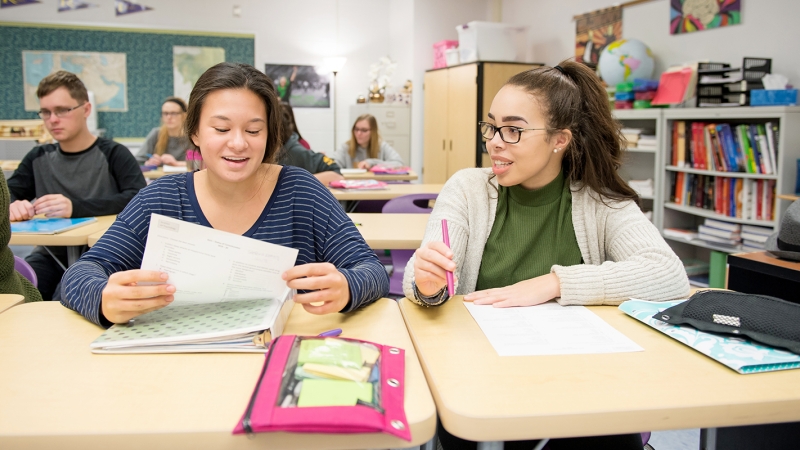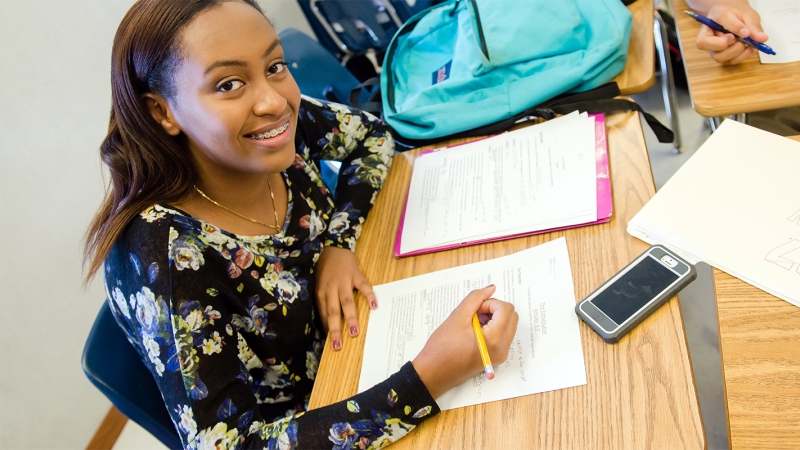
Responsive Instruction for Students with Dyslexia
Responsive Instruction helps schools recognize the characteristics of dyslexia and can be utilized to service the needs of student with dyslexia who do not require special education services.
RESPONSIVE INSTRUCTION: A MULTI-TIERED SYSTEM OF SUPPORT
Responsive Instruction (RI) is a multi-tiered system of support (MTSS) applied to academics, behavior, and student wellness at the district and school levels. The implementation of an MTSS ensures the delivery of high quality core instruction with consistent review of data to ensure early identification of and intervention for struggling students. School teams routinely problem solve using current data to identify student’s strengths and instructional needs. The information helps teams design an intervention providing the right combination of instructional components and intensity of implementation.
WHAT ARE THE TIERS OF SUPPORT?
At all tiers, teachers engage in ongoing monitoring of student progress to measure how students are responding to core instruction and interventions. The parent/guardian is a partner in this process and is informed about the student’s progress and needs.
Tier 1
All students receive:
- Evidence-based, high quality core instruction
- Differentiated instruction and additional support provided as needed
Tier 2
Based on data, some students receive:
- Small group, targeted intervention in addition to high quality core instruction.
Tier 3
Based on data, few students receive:
- Intensive intervention in areas of need in addition to high quality core instruction.
RI does NOT replace the special education process of identifying a disability. If at any time a parent/guardian or a teacher believes a student has a disability, they have the right to make a referral to the Local Screening Committee. RI can be a source of targeted intervention for a student with dyslexia.
PLANNING INTERVENTIONS TO SUPPORT DYSLEXIA
An intervention is evidence-based, systematic, and explicit instruction that targets a specific area of need. It is provided in addition to core instruction and is intentionally designed to increase performance in relation to a specific, measureable goal. Interventions must be based on valid and current performance data, delivered with fidelity, and require ongoing progress monitoring (Buffum, Mattos, & Weber, 2009; DuFour, DuFour, Eaker, & Many, 2010; RTI Action Network, 2017).For more information on fidelity, see the section entitled, “Interventions and Specialized Reading Programs.”
Teams may develop a targeted plan with evidence-based strategies or elect to use an evidence-based program to meet students’ needs. The Responsive Instruction problem-solving process helps teams identify students’ areas of strength and need as early as possible and match students to the necessary interventions.
The Responsive Instruction problem-solving process can help school teams identify and address the needs of students with dyslexia. Dyslexia may impact multiple areas including reading, mathematics, behavior, and student wellness.
READING
Students with dyslexia have difficulty with decoding and/or fluency despite cognitive strengths and access to strong reading instruction. Because dyslexia occurs on a continuum, not all students with dyslexia need special education services, but most will require explicit instruction in phonological skills. Some students may also require intervention through structured literacy programs. The FCPS Responsive Instruction framework provides school teams a process through which students can receive the appropriate level of instruction and intervention to meet their needs.
With early identification and explicit instruction in phonological awareness and phonics, teachers help create and strengthen the brain’s pathways for accurate and fluent reading. Research supports the efficacy of an explicit phonics approach using a structured literacy approach. For example, the Orton-Gillingham approach includes instructional practices which are direct, explicit, systematic, sequential, multisensory, and provide immediate corrective feedback, and include a cumulative review of content.
See the section entitled, “Core Instruction for Students with Dyslexia” for a description of each of these aspects of the structured literacy approach. Learn more about interventions that employ this methodology in the section entitled, “Interventions and Specialized Reading Programs.”
WRITING
Students with dyslexia typically struggle to spell words accurately or automatically, both when they are sequencing the sounds present in regularly spelled words (such as “fun,” “tiger” or “girl”) or when they are recalling the letter sequences of irregular or exception words (such as “were,” “would,” or “they.”)
Yet spelling is not the only difficulty students with dyslexia may have with writing. The process by which students express their thoughts or ideas in written language can also be impacted by dyslexia. In part, this may stem from students’ avoidance of words they cannot spell accurately, which can then result in a simplification of the messages they are attempting to express. However, students may also struggle to organize their thoughts, convey ideas in a logical order, or sustain effort long enough to produce a complete piece of written text.
For students with dyslexia, interventions employing an explicit phonics approach improves not only reading skills but spelling skills as well. Often, improved spelling will result in longer, more cohesive written pieces. Occasionally, interventions for writing composition may also need to be provided.
MATHEMATICS
Students with dyslexia may struggle with the reading and writing involved in mathematics classes. However, students with dyslexia may also struggle to solve math problems. Mathematics difficulties may stem from similar underlying factors to dyslexia, such as the rapid naming of numbers, or weaknesses in working memory that impact counting, multistep problems, and mental computations.
Unlike students with dyscalculia, students with dyslexia may successfully engage in conceptual problem solving. See the section entitled, “Common Co-existing Conditions with Dyslexia” for more information about dyscalculia.
As with reading, teams should identify areas of student strength and need in mathematics in order to match students to the necessary interventions as early as possible. Students with math difficulties often require explicit instruction in math calculation and/or problem solving.
BEHAVIOR AND WELLNESS
Dyslexia can impact students’ social and emotional welfare. Students may respond to the frustrations of dyslexia in different ways. Some students demonstrate the impact of dyslexia outwardly by engaging in attention-getting, avoidance, and/or disruptive behaviors. Other students respond to dyslexia inwardly and may develop anxiety or depression. See the section entitled, “Social Emotional Impacts of Dyslexia” for more information.
The Responsive Instruction process can help teams problem solve for the needs of individual students, whether school teams are responding to the behaviors or the wellness needs of students with dyslexia. Teams can examine data, plan interventions and supports, and monitor progress to ensure that the social and emotional needs of students with dyslexia are well met.
KEY COMPONENTS FOR SUCCESSFUL INTERVENTIONS
- Student needs are specifically identified, interventions are matched to the underlying skill deficits, and are delivered by a trained professional.
- Instruction is well planned, sequenced, and implemented with fidelity.
- Students improve by building necessary skills/strategies.
- Progress is monitored on the specific skill/strategy and discussed on a consistent basis.
- Communication occurs between the interventionist and all other stakeholders, including families.
- Students continue to receive high quality core instruction.
REFERENCES
Buffum, A., Mattos, M., & Weber, C. (2009). Pyramid response to intervention: RTI, professional learning communities, and how to respond when students don't learn. Bloomington, IN: Solution Tree.
DuFour, R., DuFour, R., Eaker, R., & Many, T. (2010) Learning by doing: A handbook for professional learning communities at work. Bloomington, IN: Solution Tree.
RTI Action Network (2017) http://www.rtinetwork.org/
© 2017 Fairfax County School Board. All rights reserved. This material may not be reproduced, displayed, modified or distributed without the express prior written permission of the copyright holder. For permission, contact the FCPS Department of Special Services, Office of Special Education Instruction, Willow Oaks Corporate Center, 8270 Willow Oaks Corporate Drive, Fairfax, VA 22031.





